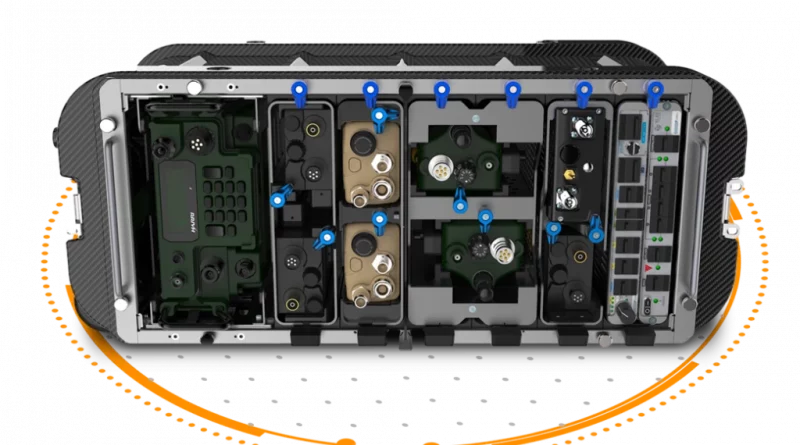Klas Government, SNC Launch Low-SWaP Tactical Comms Solution for Deploying Link 16 at the Tactical Edge
Klas’ Voyager Tactical Data Link (TDL) is now SNC TRAX® software enabled, unleashing the vision of CJADC2, while facilitating data exchanges across connected battlespace domains
Klas Government and Sierra Nevada Corporation (SNC) announced the launch of a joint tactical communications solution, enabling coalition partners to deploy Link 16 at a low-SWaP form factor not previously possible. The solution facilitates real-time data exchanges across connected battlespace domains (air, land, sea, space, and cyber) while also ensuring a unified Common Operating Picture (COP).
Sensors deployed at the tactical edge of today’s battlefield are constantly collecting situational data and transmitting it back to commanders, who know that the slightest delay in receiving or returning intel can cost the U.S. and its allies an opportunity to defeat a growing threat. Klas’ Voyager Tactical Data Link (TDL) Gateway with SNC’s Tactical Radio Application eXtension (SNC TRAX) is a small, lightweight, rugged network structure that extends data capabilities to the forward edge of the fight, optimizing Command and Control (C2) across echelons, battlespace awareness and decision dominance.
“Link 16 is the standard across U.S., NATO and coalition forces for transmitting and exchanging real-time tactical data, but the challenge has been making it available in a cost-effective, low-SWaP package that can be broadly deployed, while also enabling forces to seamlessly add new capabilities to meet evolving mission needs,” said Chris Ericksen, chief revenue officer, Klas Government. “Our joint solution represents a breakthrough by democratizing Link 16 deployment and unleashing the next generation of data sharing capabilities at the tactical edge.”
Voyager TDL & SNC TRAX unleash the full vision of Combined Joint All-Domain Command and Control (CJADC2), enabling true multi-domain operations like never before. CJADC2 is built around the concept of connecting sensors, operators, and command nodes from each of the military’s six branches in a “mesh network” that would allow commanders more options and the ability to act faster.
Voyager TDL Gateway with SNC TRAX enables soldiers to interact with assets and other partners in real-time, amongst disparate networks, data links, and data transport methods at the tactical edge. The joint solution integrates the following core components:
Voyager TDL – The Voyager TDL Gateway is an open standard hardware and software solution consisting of a Voyager 8 Plus chassis with complementary Voyager modules, tactical radios, and an optional amplifier. At the core of this system is the VoyagerVM 3.0 module providing an Intel® Xeon® D-1577, 16-core compute module, operating the SNC TRAX software within a Hypervisor instance, and Voyager radio brackets for support of 25 handheld radios.
SNC TRAX® – SNC TRAX is a multi-domain software-based integration platform with a foundational purpose of providing data interoperability, data forwarding, and routing, and operating as a TDL Gateway application, utilizing open-based military and industry message standards.
Link 16 Radio – The key to success for SNC TRAX on Voyager TDL Gateway is the inclusion of the BATS-D AN/PRC-161 Link 16 radio. Past Link 16 enabled systems have been large and bulky. The BATS-D AN/PRC-161 solves what these other radios lacked: a small, hand-held Link 16 radio that fits neatly into the Voyager 8 Plus chassis where complementary compute modules enhance the capabilities of Link 16.
“The SNC TRAX software provides an operationally proven solution capable of removing some of the key barriers that can prevent our forces from realizing the overwhelming potential of networking our sensors, weapons, and systems,” said Thomas Klonk, SNC program director. “Having an integration tool like SNC TRAX allows industry to focus less on military standards and more on creating the next generation of sensors, weapons, artificial intelligence application, or user interface.”

